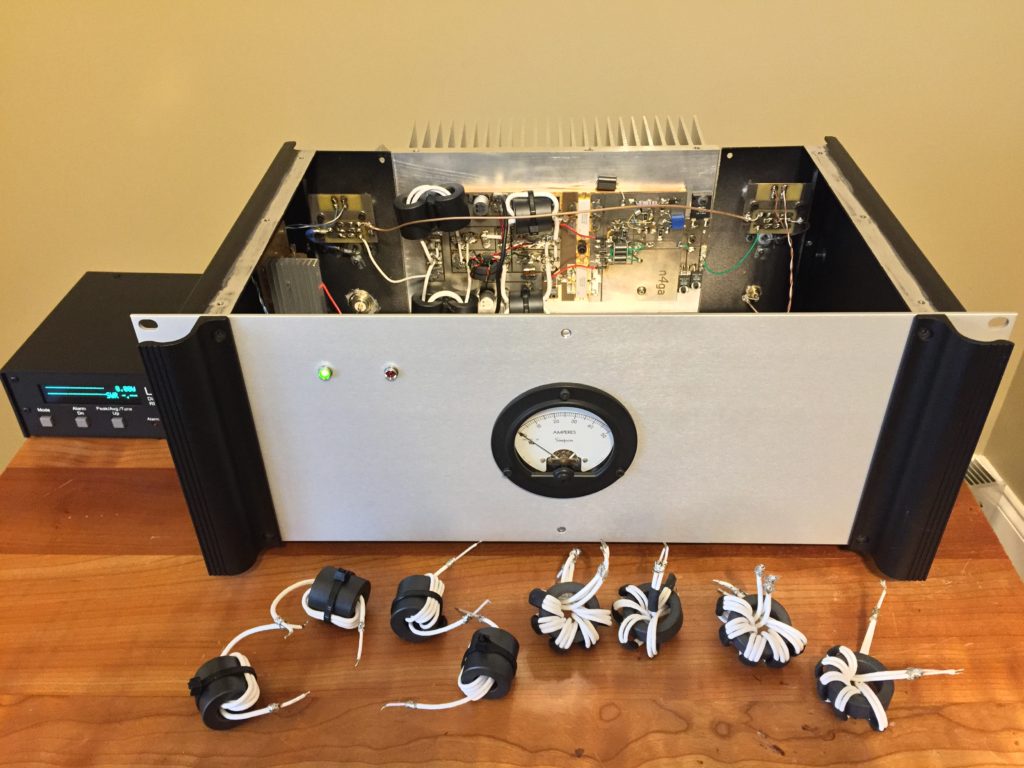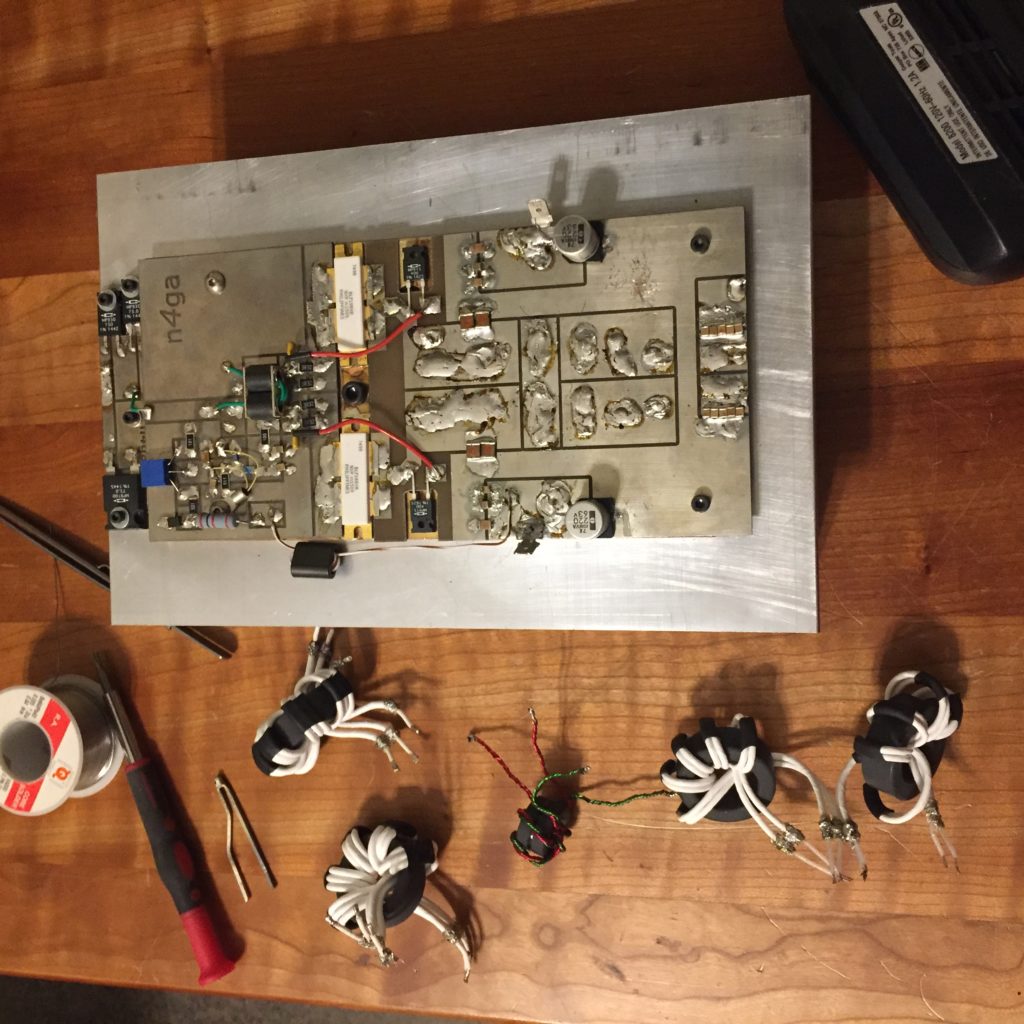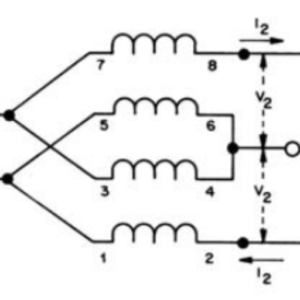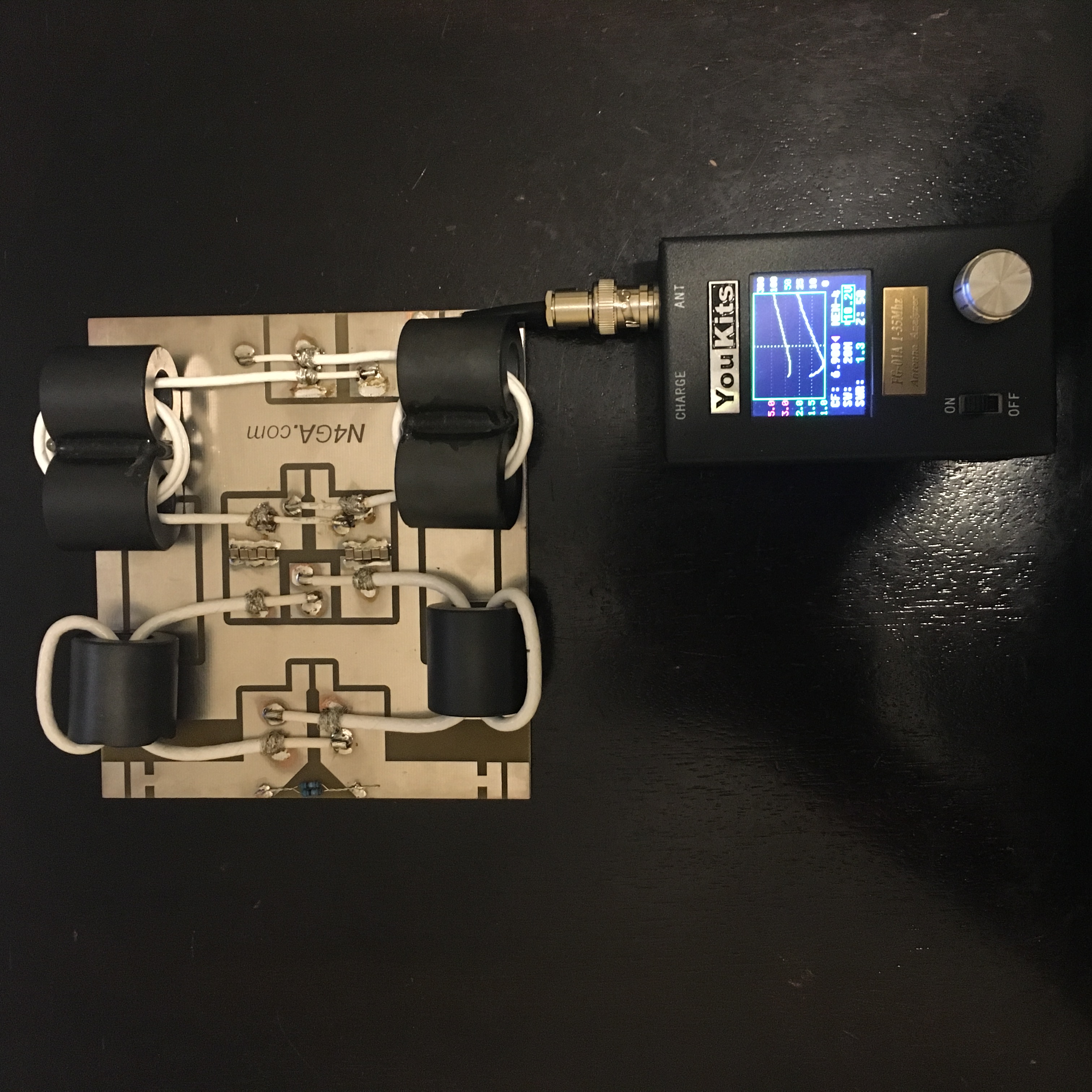Cold Rainy Saturday here today so I decided to experiment with some TLT designs and ideas.

Stripped the TLTs off my old standby pallet, a 2 x BLF188 and went to work.
You can design TLTs using the math, but trust me, this only gets you in the ballpark – a starting point if you will.
You have to add turns, remove turns, try different cores, try different coax, and each time there’s a ton of labor involved. Each time, you have to reassemble the test stand, then test the pallet across all the HF bands, 160m to 6m. This is not like pushing buttons on a simulator folks!
For each iteration, you put all the data in a spreadsheet, then compare it to the test before it, consider the changes made from the last test to the current test, consider what end(s) of the HF spectrum got affected and how, then make a logical adjustment for the next test.
Managed to get through about 8 permutations and with all the testing, studying the results, and then progressing logically, I ended up converging on a pretty damn nice design.
I’m going to use it in the real world for a month or so and she how it plays.




Leave a Reply